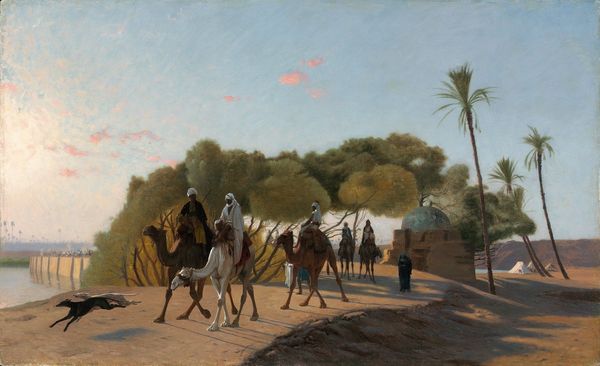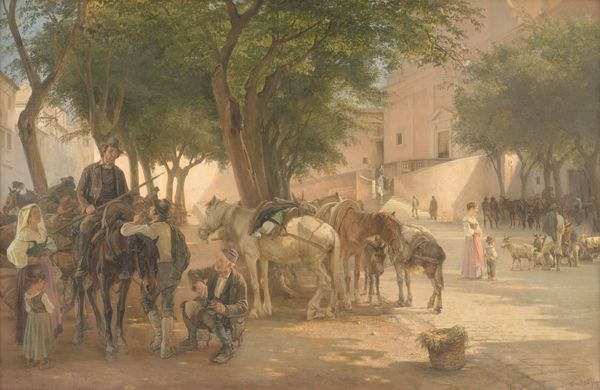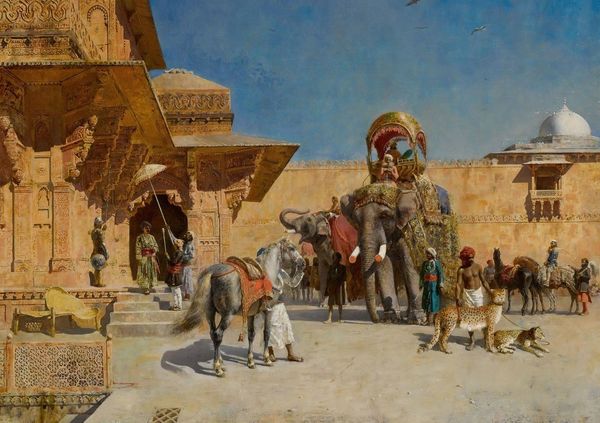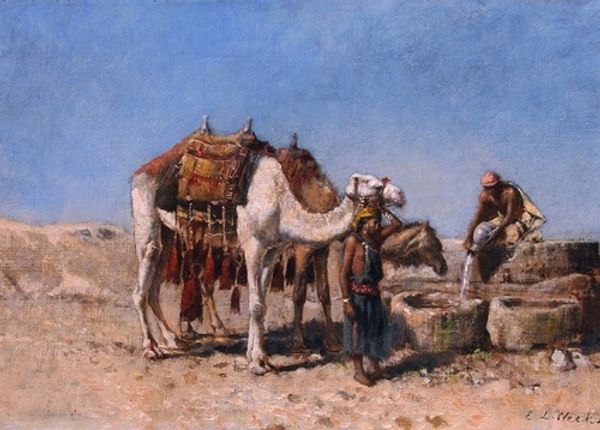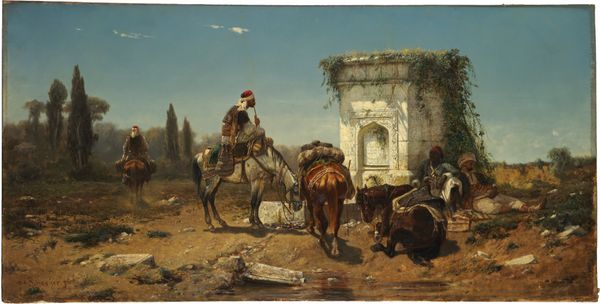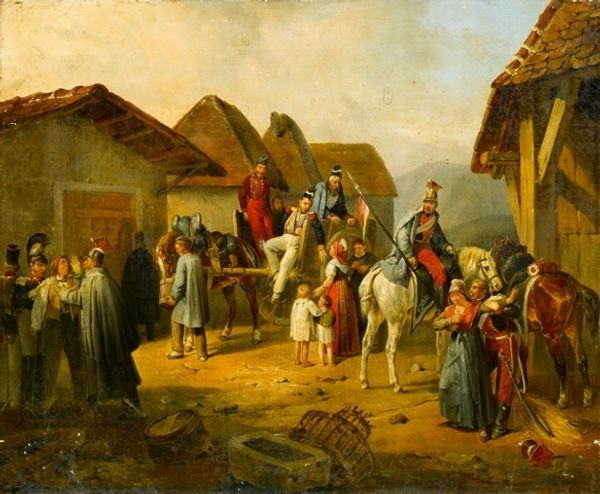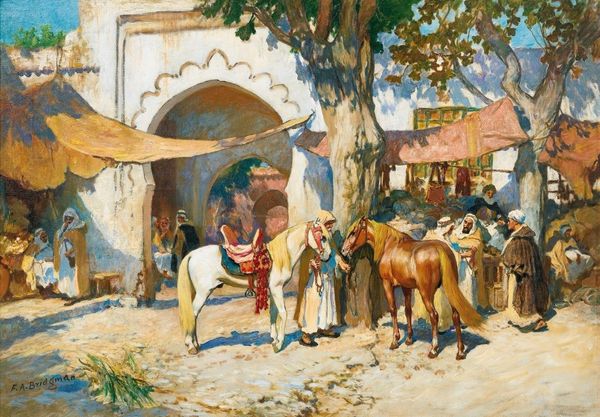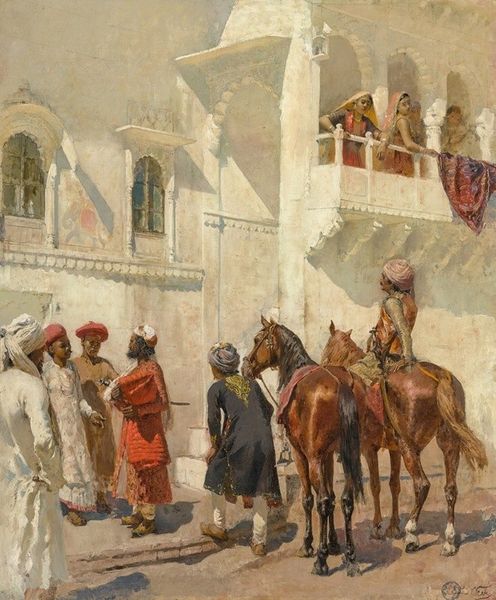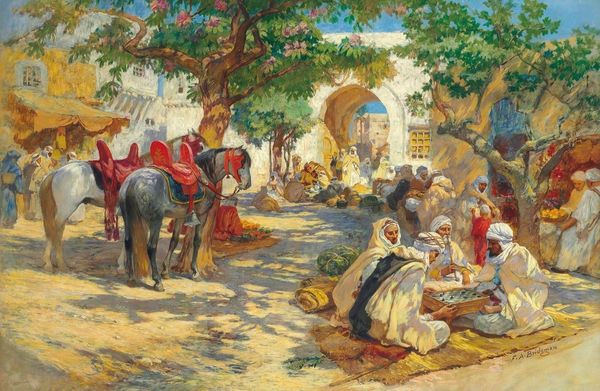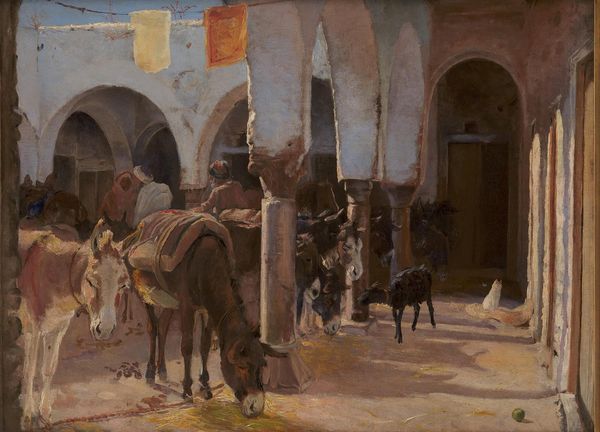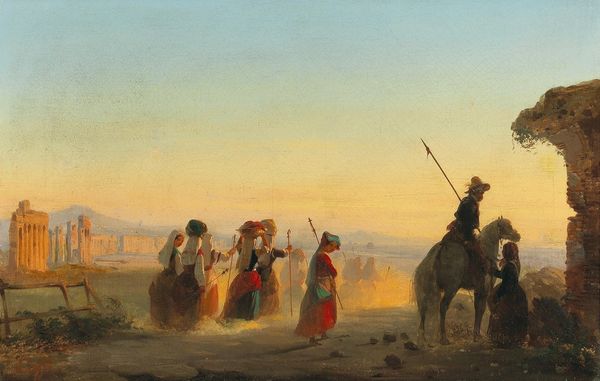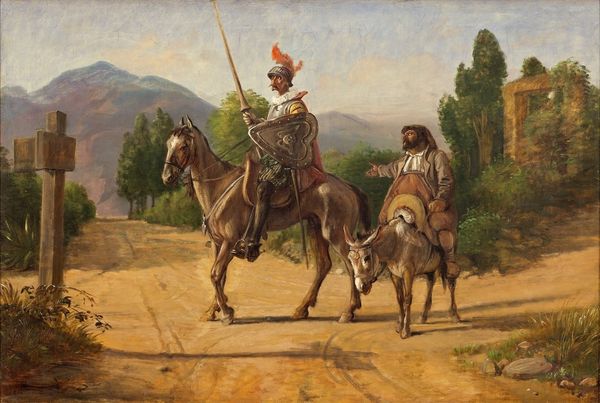
painting, oil-paint
#
gouache
#
figurative
#
painting
#
oil-paint
#
landscape
#
painted
#
figuration
#
oil painting
#
orientalism
#
genre-painting
#
watercolor
Copyright: Public Domain: Artvee
Editor: Edwin Lord Weeks painted "A Pilgrimage to the Jordan," in oil, showing a journey of people. It strikes me as quite detailed and realistic in depicting this Middle Eastern scene. What do you see in this piece? Curator: Beyond the surface realism, this painting embodies key aspects of Orientalism. We need to critically examine how it constructs a vision of the East. Note how Weeks focuses on the exotic "other," seemingly romanticizing the pilgrimage. It’s vital to ask: whose perspective dominates here? Editor: So, it's not just a depiction, but a specific interpretation of the culture. Curator: Exactly. The very act of depicting a "pilgrimage" simplifies a complex cultural event, maybe even implying Western superiority through the artist's gaze. Think about the power dynamics involved when a Western artist like Weeks paints a culture largely unfamiliar to his Western audience. Who does this portrayal benefit, and how? Editor: I never thought about the artist's role in creating a specific narrative. Does this "narrative" affect our understanding of the depicted culture? Curator: Undeniably. We should analyze what is emphasized—the visual spectacle, the supposed quaintness—and what is omitted. This painting then is not simply a window into another world but rather a mirror reflecting the biases and assumptions of its creator's cultural context. So let’s discuss: what assumptions about gender, class, and faith can we extrapolate from this artwork? Editor: This discussion reframed the artwork, going beyond initial impressions to its deeper context. Curator: Precisely, it’s imperative to question the artwork’s intentions, its historical moment, and its lasting impact.
Comments
No comments
Be the first to comment and join the conversation on the ultimate creative platform.
